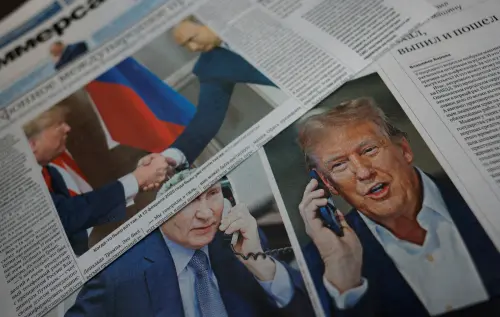WASHINGTON, Feb 14 (Reuters) - It has been a bewildering week for those concerned about how the new Trump administration intends to fulfill Donald Trump's promise to end the crisis in Europe.
While the U.S. president took initial steps toward diplomacy in the nearly three-year conflict, statements from his top officials have left many uncertain about his plans for Europe's largest security challenge in decades.
Trump spoke with Russian President Vladimir Putin and Ukraine's Volodymyr Zelenskiy by phone on Wednesday, initiating negotiations and hinting at a potential summit with Putin in Saudi Arabia.
This stirred further confusion among observers due to contradictory statements from Trump's defense secretary, Pete Hegseth. Hegseth initially expressed skepticism about Ukraine joining NATO and downplayed Kyiv's efforts to reclaim its territorial integrity from Russia, only to retract his comments the following day, stating that all options were open for negotiations.
Vice President JD Vance added to the uncertainty by suggesting the possibility of deploying U.S. troops to Ukraine for pressuring Moscow, a departure from the previous administration's stance. Vance later clarified his position, emphasizing the importance of aligning troop deployment with U.S. interests and security needs.
Ambassador Daniel Fried noted the mixed messaging from the administration, pointing out the lack of a coherent strategy but acknowledging the potential for negotiating an acceptable resolution with Russia.
European allies expressed concern that the U.S. was making premature concessions, with German Defense Minister Boris Pistorius criticizing the administration's approach as "clumsy" and premature before any formal negotiations.
Republican U.S. Senator Roger Wicker criticized Hegseth's remarks as a "rookie mistake" for appearing to concede to Russia before negotiations even began, labeling the approach as puzzling and disturbing.
Despite the conflicting signals, Fried suggested that Trump's priorities on Ukraine were becoming clearer, aiming for a ceasefire, security guarantees, and European troops to maintain peace, potentially leading to a positive outcome for Ukraine.
